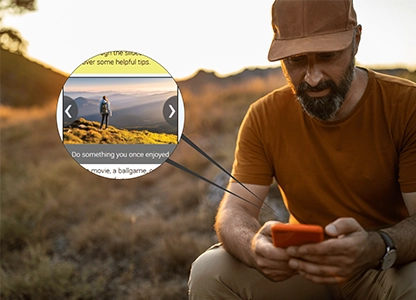Home » News & Resources » User Experience » User Experience: 10 Ways to Improve Your Website

User Experience: 10 Ways to Improve Your Website
Websites that have been built with user experience in mind fair much better than websites that were built based on the company's needs without considering their users and potential clients.

User Experience: 10 Ways to Improve Your Website
Websites that have been built with user experience in mind fair much better than websites that were built based on the company's needs without considering their users and potential clients.
User Experience: 10 Ways to Improve Your Website
Published: 06/18/2022

Websites that have been built with User Experience (UX) in mind fair much better than websites that were built based on the company's needs without considering their users and potential clients. By definition, user experience is how a user interacts with a product, such as a website, or an application. A website with good user experience is easy to use, and find information.
One of the best investments a company can make is to improve their website to ensure that it is a positive experience for their users; with content that is easy to find, has value while also meeting the goals of the company. Below are ways to improve user experience for websites and applications.
Gather Data for Better User Experience
Research is a great step to take in order to improve UX. From gathering feedback from website visitors and clients, conducting focus groups, and staying informed with current web technologies that pertain to UX and SEO.
Mobile First
If you haven't invested time and resources to make sure your website is responsive, now is the time! Most users are visiting your website from a mobile device such as a phone or a tablet; in comparison to a desktop computer. It is crucial that your site is responsive to provide the best user experience for your visitors.
Make It Appealing
From graphics, to color, layout and presentation, there are studies that visual appeal can attract, or deter a visitor from navigating a website. When it comes to the use of photos, make sure they are high quality, while also being optimized. A rule of thumb is to also look for images that are less "stock photo" like or to take your own photos. Although stock photos were very popular, now it is considered to be "less authentic" so taking extra time to find the right images can make the difference.

Test It Out
Thorough testing can help improve UX. Especially testing the site for cross-browser compatibility, performance, loading time and even testing in different devices. Testing is something that commonly gets overlooked; but at the very least, companies should be aware how their website performs when loading on browsers.
Content Is King
Content is king; and needs to be updated on a consistent basis when necessary. Especially if you want your website to rank high in the search results; by improving search engine optimization. There are tools that will help improve content such as Yoast, so search engines can easily find your site.

Simplify
This is one of the most underrated ways to improve user experience. It's not about having all the bells and whistles a website can have; it's to keep it simple and be very conscious of the elements on the page, do they work cohesively? Does it allow enough white space to appeal to the user?
Broaden Communication
Having different ways for users to communicate, such as phone, email or chat system; or at least a contact form improves user experience. Also, the power of social media should be harnessed in order to reach more people, and them discover what you offer.
Call To Action
Having a Call to Action (CTA) on each page is fundamental for visitors to take action; whether is fill out a form, schedule a consultation, or to simply follow them on social media platforms. The CTA should be prominent on a page without detracting from user experience (such as annoying popups).
Consistency
Consistency of the company's brand, look/feel and the message throughout the website make things more cohesive; and this improves user experience overall. Also, consistency should also apply to navigation, and even fonts, colors and styles. This is the foundation for user experience; and should reflect the company and its image.
Modernize The 404 Page
In the past, a 404 error would show up if a page wasn't found, with no other way for the user to find the information they are looking for. This was acceptable back then, but now, with all the innovations, there is no need for users to encounter a browser 404 page. Instead, visitors should find a page letting them know the page they were looking for was not found, and provide them options or other pages they can visit for more information.
In conclusion, improving website user experience always brings success when companies take the time to figure out what their visitors are looking for, maintain consistency, visual appeal while keeping things simple, and make sure that the website is fast and easy to access information; with clear calls to action.
Categories
Digital LearningExperience Design
SEO Tips
User Experience
Website Development
Transit Display
AV Integration


